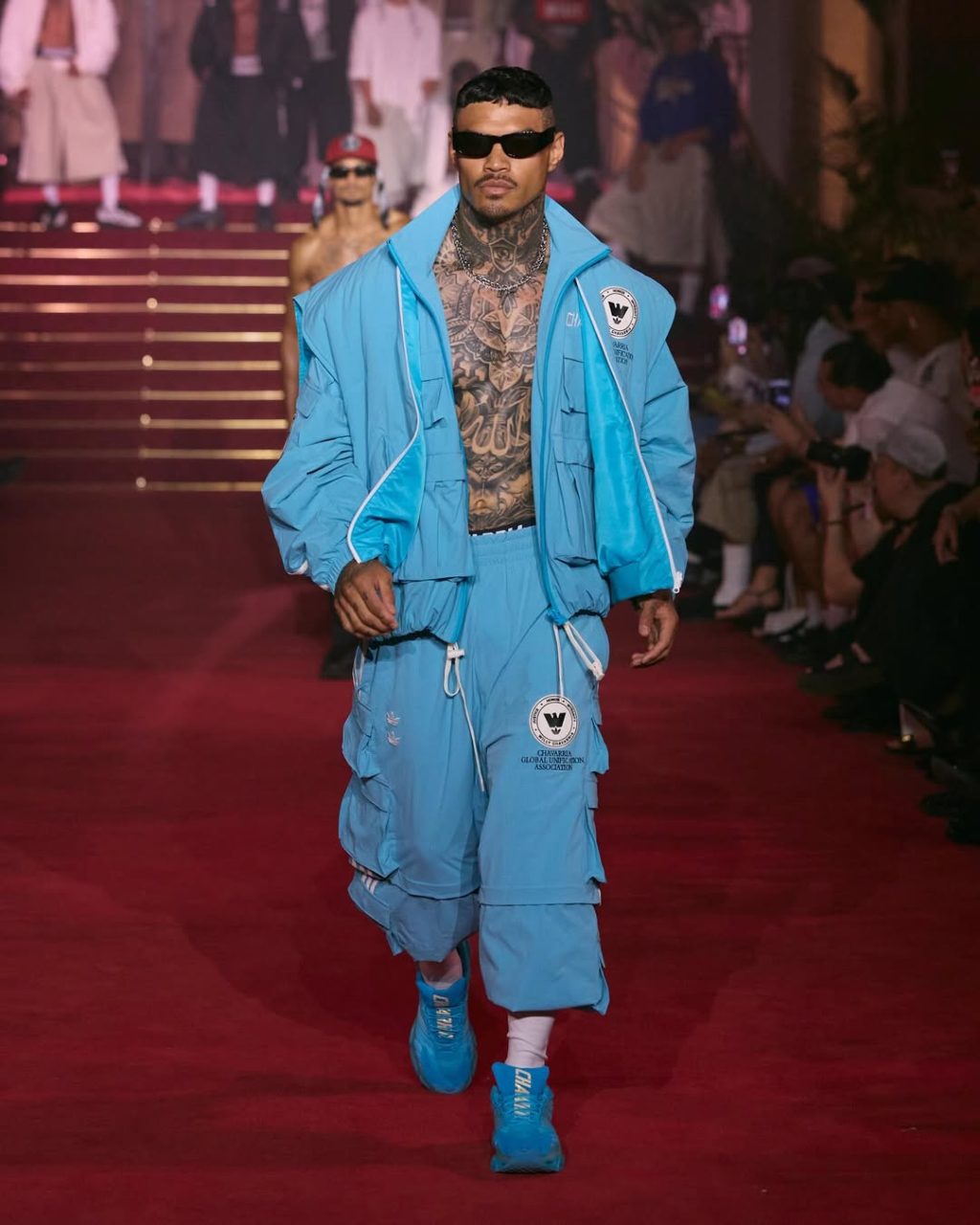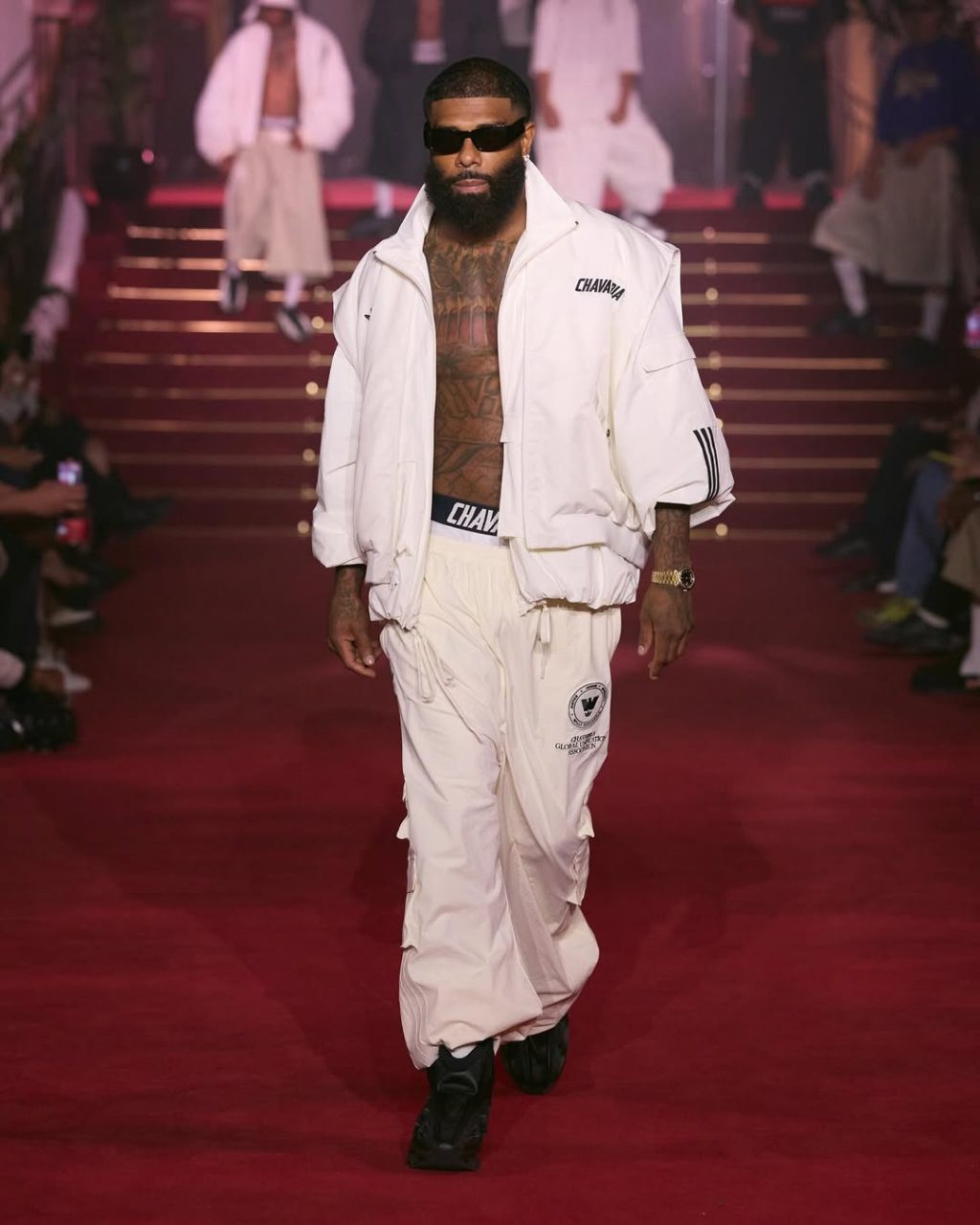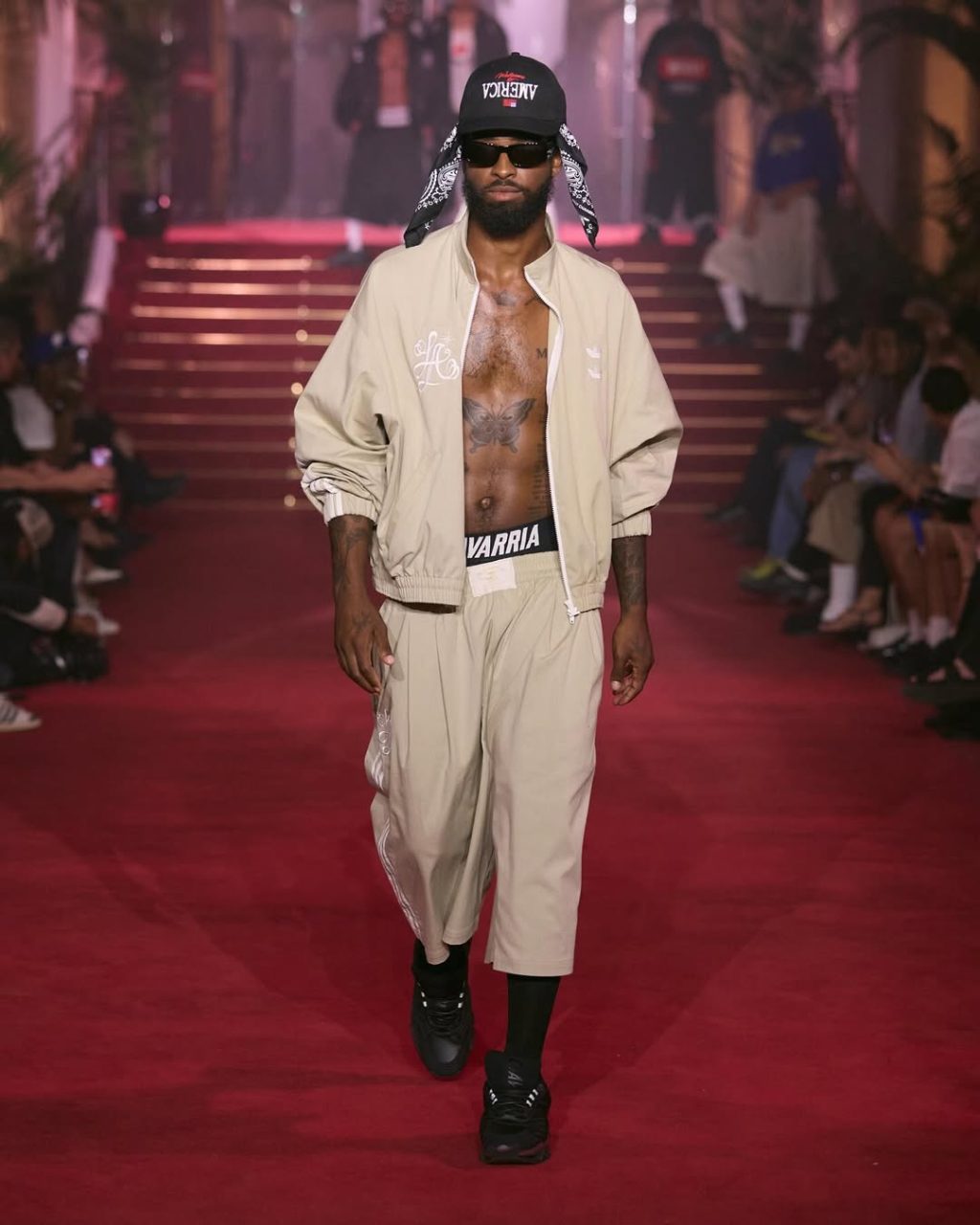Fashion as Witness: Chavarria’s Tribute to the Detained
Paris’ Salle Pleyel didn’t just host a show this season — it hosted a reckoning. Willy Chavarria’s SS26 collection didn’t arrive in noise. It began in stillness: 35 men, lined up in silence, dressed in crisp white ACLU shirts, hands clasped behind them. A still life of resistance. No music. No theatrics. Just bodies. Just presence.
This wasn’t fashion as escapism. This was fashion as testimony.
Named Huron, the collection moved like a quiet sermon. Long tailored coats in monochrome palettes, oversized silhouettes styled with precision, and an almost sacred use of minimalism. Pieces hovered somewhere between courtroom and cathedral — familiar but loaded, gentle but firm. The focus wasn’t on design tricks but emotional architecture.
There were no logos screaming for attention. No gimmicks. Just structure, shape, and message. A shirt became a shield. A suit became a stage. Chavarria understands the politics of form — how to weaponize elegance, how to make fabric carry memory.
The casting did what most brands claim to but rarely execute: it reflected the world outside. Real faces. Real tension. Chavarria doesn’t tokenize — he centers.
One look — a layered cream ensemble with delicate accessories — felt like a eulogy in motion. Another, all-black with a rosary tucked under the collar, could have belonged to a man leaving court, or walking into confession. This duality — of dignity and grief, of strength and vulnerability — shaped the show’s core.
Even as the show moved into its final looks, the tempo never shifted to spectacle. Instead, Chavarria stayed locked in on feeling. The sound returned only at the end — sparse and cinematic — like breath after holding it too long.
In a season cluttered with brand noise, Huron offered quiet clarity. Chavarria isn’t asking to be heard. He’s already speaking. The question is whether fashion is ready to listen.


